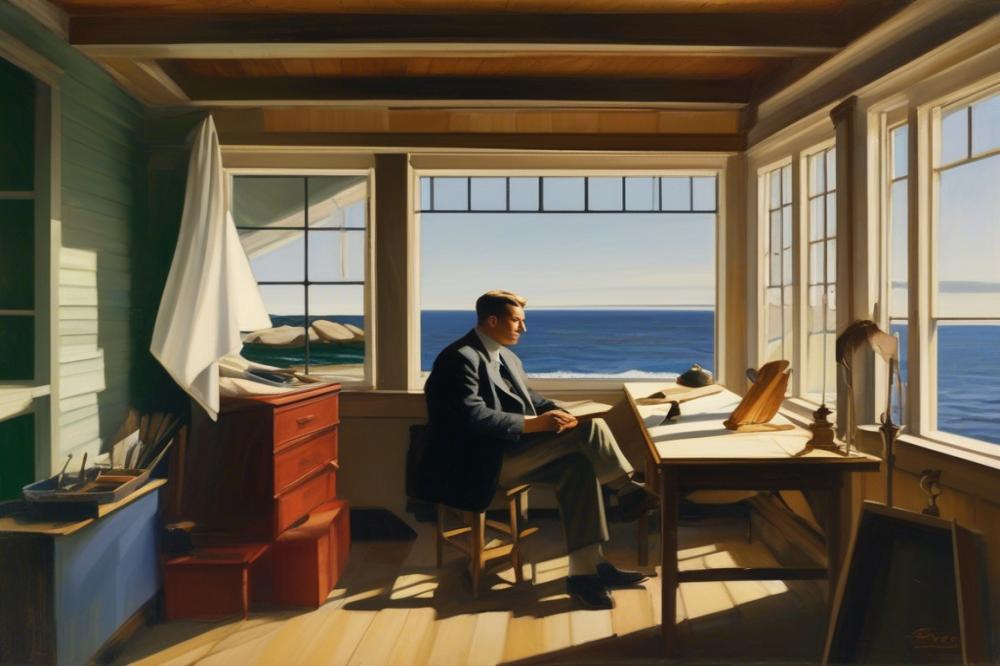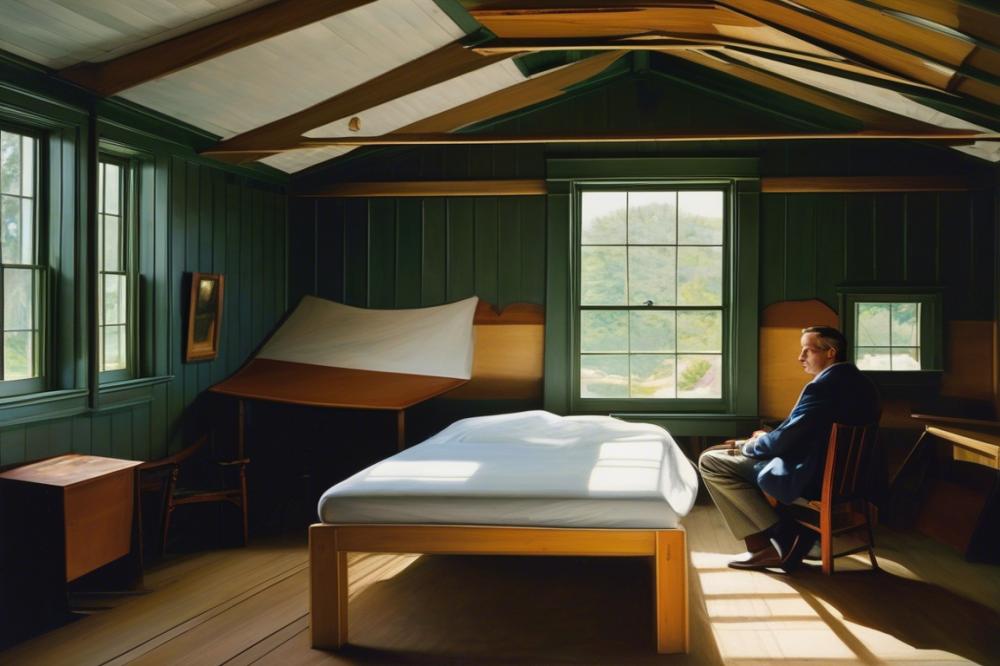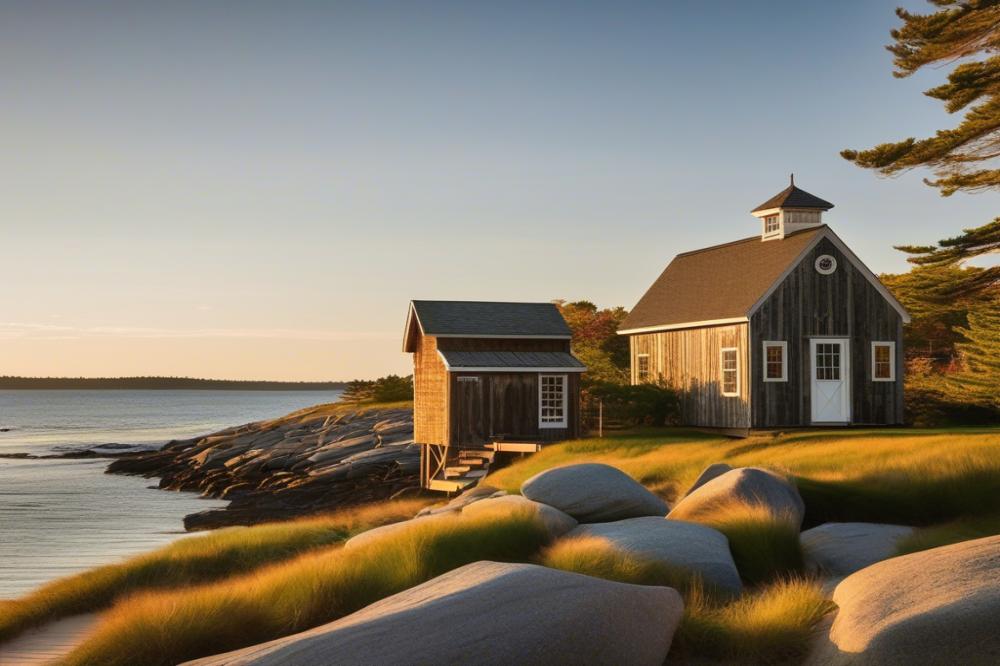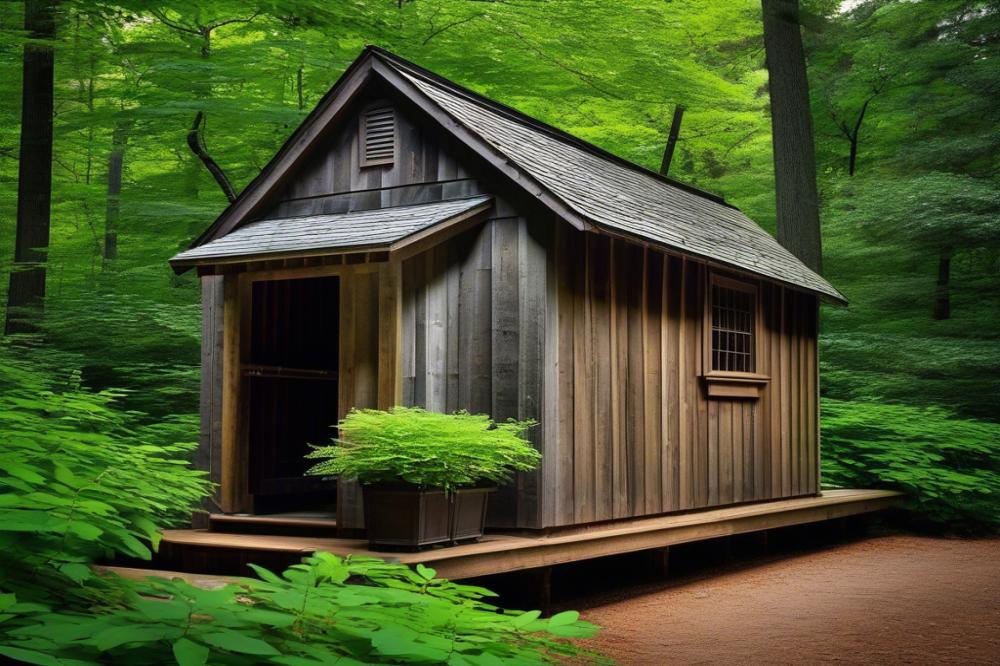The Coastal Boathouse Shed of Edward Hopper in Maine
Understanding American Realism
American realism has profoundly shaped the landscape of art in the United States. artists focused on depicting everyday life, often highlighting the beauty in simplicity. With his masterful technique, Edward Hopper became one of the most prominent figures in this movement. His works often reflect the quiet moments and intimate spaces of American life. A unique perspective is present in his paintings, which invite viewers to pause and reflect.
The Significance of Coastal Works
Coastal scenes hold a special place in Hopper’s body of work. They reveal a deep connection with the maritime life of New England. These artworks convey both tranquility and solitude. The lighthouses, boats, and shores often evoke a sense of longing or introspection. Many artists find inspiration in the coastal themes he explored, capturing the essence of life by the sea.
The Coastal Boathouse Shed
One standout piece in the narrative of his coastal works is the Coastal Boathouse Shed in Maine. This structure embodies the architecture and charm that is so characteristic of the region. The shed is a testament to the simple, yet profound beauty found in New England’s landscape. Its unique character and artistry contribute to the area’s allure. For many art enthusiasts, this site serves as a significant point of interest for understanding Hopper’s connection to the coast.
Ultimately, this exploration of Hopper’s art demonstrates the lasting impact of his vision. The Coastal Boathouse Shed is no mere building; it is a symbol of the creative spirit found in Maine and beyond.
Edward Hopper: An Artistic Journey

Biography
Born in 1882 in Nyack, New York, Hopper showed an interest in art at an early age. He later attended the New York School of Art, where he learned under prominent figures like Robert Henri. His artistic journey spanned several decades, influencing many through his distinctive style. Maine became a significant source of inspiration, shaping his approach to landscapes and architecture. Hopper’s work often reflected his personal experiences and feelings, making him a vital figure in American art.
Key Themes in His Art
Maritime scenes and New England landscapes frequently appear in his body of work. Lighthouses, boats, and coastal buildings portrayed a sense of place that resonated deeply with viewers. Color and light played crucial roles in his paintings, allowing landscapes to evoke both beauty and melancholy. Artists who followed his path often looked to these themes for guidance. Each canvas captures more than just scenery; it translates emotion into visual form.
Contribution to American Realism and Solitude
His approach to American realism set him apart from his contemporaries. Hopper’s exploration of solitude became a defining characteristic of his art. Many of his pieces highlight isolation, reflecting broader themes of human experience. Quiet, desolate moments often captured viewers’ attention, urging them to confront their own feelings of loneliness. The intimate architecture of Maine found its way into his paintings, conveying a deep connection to place.
The Coastal Boathouse Shed

Description of the structure and its architecture
The coastal boathouse shed stands as a simple yet striking piece of architecture. Built in the early 20th century, its design reflects the functional needs of maritime life. Wooden beams support the structure, worn down by the salty air of Maine. It features a sloping roof, reminiscent of traditional New England buildings. The exterior remains weathered and grey, a testament to its long history. Large doors open to reveal a space that once housed boats. Inside, shadows play across the walls, creating a compelling atmosphere. This shed, while modest, evokes a sense of timelessness within the coastal landscape.
Significance of the boathouse in Hopper’s life and work
This boathouse holds deep meaning for Hopper. It served as a source of inspiration for his art. Many paintings reflect scenes from this very place. Artists often explore themes of solitude and introspection, something Hopper embraced fully. The simplicity of the shed mirrors his style within American realism. Each brushstroke captures the light and mood, making his work resonate with viewers. Through the boathouse, he found a connection to the sea and the life surrounding it. This connection shaped his perception of the world and the emotions he sought to express.
The relationship between the shed and the coastal environment
The coastal environment cradles the boathouse, enhancing its significance. Waves lap against the shore, creating a soothing backdrop. The scent of salt air mingles with the scent of aged wood. Nearby, fishermen prepare for their journeys, reflecting the vibrant maritime culture of the area. The landscape unfolds around the shed, filled with rocky shores and gentle tides. This setting is not merely a backdrop; it enhances the structure’s presence. Observing the shed from a distance, one can see how it integrates seamlessly into the scenery. It embodies a union of form and function, rooted in the heart of Maine’s coastal beauty.
Hopper’s Artistic Inspiration

The Coastal Boathouse Shed in Maine served as a crucial source of inspiration for the renowned American painter. Its simple architectural design captured his fascination with maritime life. Located along the New England coast, the shed found its way into many of his works, providing a unique backdrop for exploration of light and shadow.
Paintings like “The Lobster Trap” exemplify how this structure influenced his art. In this piece, the shed’s rugged charm is prominent. Vibrant colors and stark contrasts bring the scene to life. The warm tones of the wood and the cool, reflective water create a captivating balance. It’s easy to see how such a setting could ignite an artist’s imagination.
Architecture and Landscape
Architecture in Hopper’s work often reflects his deep connection to the landscape. The boathouse shed is not merely a shelter; it’s an integral element of the scenery. Landscapes feature as characters in his paintings, often overshadowing human figures. An empty boathouse can feel more alive than the people sometimes depicted nearby.
Additionally, the interplay of light plays a significant role. Hopper expertly captured how sunlight transformed surfaces. Shadows danced across the shed, emphasizing its structural lines. The changing light from dawn to dusk added layers of mood and emotion to his compositions. Every time the sun set, it offered a new perspective, enriching his exploration of American realism.
Artists who came after him often cite this blend of architecture, landscape, and light as influential. They recognize that focusing on small, everyday subjects can open a broader dialogue about place and time. This philosophy resonates in many artistic circles, affirming the shed’s legacy in American art.
Cultural and Historical Context
Maine holds a special place in the New England art scene. This state has long been a muse for many painters and creators. Its rugged coastline, charming villages, and serene landscapes attract artists seeking inspiration. Many famous names have painted the picturesque surroundings. Local beauty has become part of America’s artistic legacy.
Maritime culture deeply influences the art produced in this region. Fishing boats, lighthouses, and coastal life offer a rich backdrop for various artists. Through their works, they capture the spirit of the sea and the people who depend on it. The significance of the coast is evident in many paintings. Artists often portray the everyday stories of those who live near the water.
The Boathouse and Local History
Aboathouse is more than just a storage place for boats. It represents a part of local history and architectural style. Many buildings in this area showcase simple yet elegant designs. They reflect the functional nature of the maritime community. The boathouse stands as a reminder of the region’s enduring relationship with the ocean.
Incorporating elements of American realism, the artwork from this region captures ordinary life. Scenes of fishermen at work or boats bobbing in the harbor resonate with viewers. These paintings evoke emotions tied to tradition and community. Moreover, the details often reveal the personal stories woven into Maine’s coastal life.
The coastal landscape of Maine has shaped not only the artists but also the culture surrounding them. Local history plays a significant role in how people interact with the waters. Architecture, from quaint cottages to functional boathouses, speaks volumes about the lifestyle here. All of these aspects come together to create a unique tapestry of life along Maine’s shores.
Legacy and Impact
The portrayal of the Coastal Boathouse Shed has left a significant mark on future generations. Many artists draw inspiration from Hopper’s work, looking to emulate his distinct style. They often incorporate elements of American realism into their pieces, striving to capture the essence of the New England landscape.
This small, weathered structure represents more than just a building. It stands as a symbol within American art history, chronicling the relationship between coastal architecture and maritime life. The way Hopper painted this shed reflects a deep connection to the surroundings, emphasizing solitude and quietude found along the Maine coastline.
Over the years, the shed has inspired a variety of artistic interpretations. Numerous painters and photographers have sought to depict the scene, each adding their unique perspective. The boathouse continues to be a muse for those who appreciate the compelling narrative of coastal life.
Today, the status of the boathouse remains vital to both locals and visitors. Preservation efforts work tirelessly to maintain its condition and significance. As a historic site in Maine, it attracts art enthusiasts eager to witness the inspiration behind the iconic painting.
This building not only reflects Hopper’s artistic vision but serves as a vital piece of cultural heritage. It reminds viewers of the maritime history that has shaped coastal communities. The ongoing preservation is essential to keep the legacy alive for future artists and generations to explore.
Final Thoughts
The Coastal Boathouse Shed stands as a testament to the enduring influence of Hopper’s work and vision. This small structure, often lit by the soft glow of dawn or dusk, encapsulates the essence of Maine’s rugged landscape. The way it interacts with light and shadow shows how important the environment is in his art. Observers find themselves drawn into a world where nature, architecture, and personal reflection converge.
Art and architecture blend seamlessly in Hopper’s depiction of the shed. Its simplicity offers a sense of solitude that resonates with many viewers. Elements of design are not merely functional; they evoke emotions and contribute to the narrative. Each scene invites the audience to pause and think, highlighting moments of stillness amid life’s chaos.
Iconic structures like the Coastal Boathouse Shed are more than mere buildings. They carry cultural weight, connecting us to past artists and their creative processes. As we reflect on Hopper’s legacy, we recognize how such sites inspire artists today. They remind us that spaces can communicate feelings and stories, transcending time.
In wrapping up our exploration, it becomes clear that Hopper’s influence continues to shape how we view art and architecture. The blend of natural beauty in Maine with man-made structures creates a dialogue that speaks to all of us. Appreciating these forms doesn’t just enhance our understanding of art; it also deepens our connection to the world around us.



